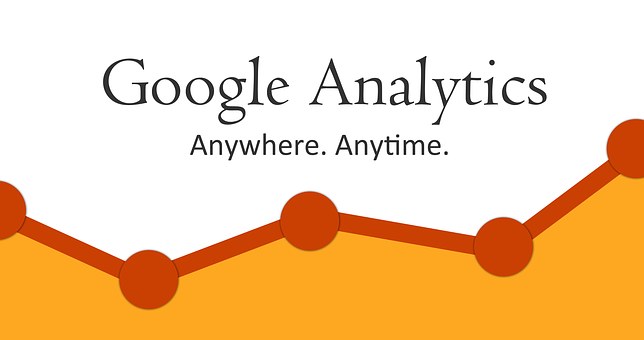Thanks to continuously evolving technologies, companies now have access to an increasingly large volume of datasets that help them make informed decisions. Data analysis helps businesses make decisions based on actual facts.
One area where big data and analytics can bring considerable improvements is with companies that employ one-piece flow (also known as continuous flow) methodology. With greater understanding in this area, you can take bold steps to improve business processes and improve overall efficiency, output and eliminate costs.
One-piece flow: the history
Most business professionals are now well-aware that multi-tasking can actually waste time and create inefficiency on an individual scale. Continuous or one-piece flow applies this same line of thinking to manufacture and business processes. This concept states that having only one work-in-progress at a time improves efficiency by saving time, money and space.
Toyota developed the basis of the system years ago. The company is well-known for its continuous improvement methodology called the Toyota Production System (TPS), which helped the automaker to become an industry leader. It was designed to enable the struggling company to overcome manufacturing challenges after World War II.
The basis of the TPS concept is to find ways to conserve resources while boosting efficiency and quality.
The system was so successful that it has since expanded throughout the auto industry. In fact, it is also applied in many other industries and represents the basis for Lean methodology today.
Toyota continues to use this approach today as well. For example, its aid workers applied this concept to packing relief supplies after Hurricane Sandy hit. They were able to reduce their time commitment in half while also serving 400 more families than others.
Why one-piece flow helps
As you examine how to apply this to the concept of one-piece flow for your business activities, consider that only one item will be in a specific stage of a business process at a time.
Each process can be divided into multiple stages. With one-piece flow, you will have only one item in each of those stages at any given time. Each piece flows through the pipelines seamlessly.
Rather than having a backlogged queue, one-piece flow eliminates the queue entirely.
Through one-piece flow, you will be able to:
- Improve quality because each item can be inspected, and any deficiencies can immediately be identified and corrected
- Incorporate flexibility into the process that enables customization for customers.
- Improve productivity by ensuring each employee is working on a task that is critical at the moment.
- Eliminate wasted floor space by only using equipment as it is needed
- Improve safety through the creation and handling of smaller batches.
- Increase employees’ sense of accomplishment and their work morale.
- Save money by using supplies as needed and producing products based on actual demand.
When you decide it’s time to move away from your current model and finally get rid of unnecessary waste and inefficiency, you must carefully coordinate each stage in the workflow.
As beneficial as one-piece flow may be to your manufacturing processes, it may be challenging to implement. Not all processes are suitable for continuous flow methodology.
How big data makes one-piece flow processes leaner
With the adoption of digital solutions and IoT in manufacturing, we can gather more data from the plant floor than ever. Both end-to-end and batch data can be used strategically to improve one-piece flow processes.
By using big data and data analysis, you can:
1. Identify where changes are most beneficial
The production process is rarely a simple matter. The complexity often makes it impossible to identify the exact culprits behind inefficiencies. The collection and analysis of data solve this issue.
Data enables a deep dive where you can examine all stages of the process on a more granular level. With detailed analytics, you can decode the complexity of the process and determine which stages should be altered and receive your attention first.
2. Determine how to make changes
As you try to decide which improvements to your manufacturing process may be most beneficial, you can use data to identify where yield is diminished during the process.
Even the companies with complex and variable production processes like vaccine manufacturers managed to leverage data for yield increase as they divided their entire process into clusters and first analyzed every cluster independently. Then, they used statistical data to determine the interdependencies.
With this approach, they knew exactly which processes were the most influential, and need to be changed. The change was planned and targeted, increasing yield by over 50%.
3. Analyze the benefits
Before you make changes, you want to ensure that those changes will be cost-effective overall. Big data can be used to analyze the cost of applying the change and the financial benefits of doing so.
Even this type of initiative can be a fluke if it lacks technology, talent or a proper use case. When it comes to use cases for big data, Matt Lindsay, president of Mather Economics says: “The key ingredient in utilizing this data will be an innovative and entrepreneurial analyst that can spot opportunities for improving business performance using the available information. The business case, with potential improvements in operating margins, is still the primary driver of successful use cases.”
Long gone are the days when we trusted our gut to make the right decisions. Now we use real-time data for smart decision making.
Data gathering has become an amazing partner in creating additional revenue through innovation and product redevelopment. When a company’s management has access to adequate analytics gained through big data, the ROI rises up to 131%, according to a study done by McKinsey.
Use case #1 – Making retail a continuous flow
Both shopping and marketing are today happening on multiple channels. Gathering data from mobile, social media, stores, websites and other allows a 360-degree customer overview and tailored shopping experience. Often consumers interact more than they spend, so understanding what triggers them to buy is the first step to increasing sales.
Data is collected from different channels:
- Websites
- POS systems
- Mobile apps
- In-store sensors
- Cameras
When data is properly engineered retailers learn from customer browsing and purchase history. They get insights into how their customers behave, how and when is best to reach them, and who are the high-value shoppers.
Supplied with this knowledge, retailers can:
- Personalize in-store experience with timely offers, recommended items
- Place ads and promotions where their consumers are by targeting their favorite websites, stores, TV shows
- Prevent customer churn by identifying risky behavior patterns and offering personalized coupons
When retailers integrate big data to understand the overall customer journey, they can evenly structure their sales processes around it. So organized sales tactics improve conversion rates, customer loyalty and reduce acquisition expenses.
Use case #2 – Lean equipment maintenance
Predicting and preventing machine failure with data insights can save money, and much more. In industries like pharmaceutical and oil, equipment failure can cause hazardous consequences.
Manufacturers use various type of data to find the perfect time for machine maintenance by detecting hidden issues. For example, data such as machine model and year, and multi-structured data from logged error entries, temperature, and vibration sensors can all be taken into account for failure pattern identification.
Timely equipment assessment is critical in industries where not all machinery is easily reachable, like with underwater parts in oil platforms. Deepwater oil wells can be monitored with data and the malfunctions predicted by gathering data into a centralized system.
There are many use cases where big data helps businesses create a more continuous flow. It’s understandable and advisable to be constantly looking for ways to improve inefficiency. You can see that moving toward one-piece flow or continuous flow offers substantial benefits that your company needs to take advantage of in order to remain competitive.
Rather than guessing at the improvements that should be made to your processes, implement the use of factual big data to make intelligent improvements as needed throughout your processes.










![7 data-driven ways to optimize your online store for mobile [Infographic]](https://crayondata.ai/wp-content/uploads/2019/11/optimize-1.jpg)


![Top tips and tricks to improving your customer experience [Infographic]](https://crayondata.ai/wp-content/uploads/2019/01/customer-journey-1.jpg)









